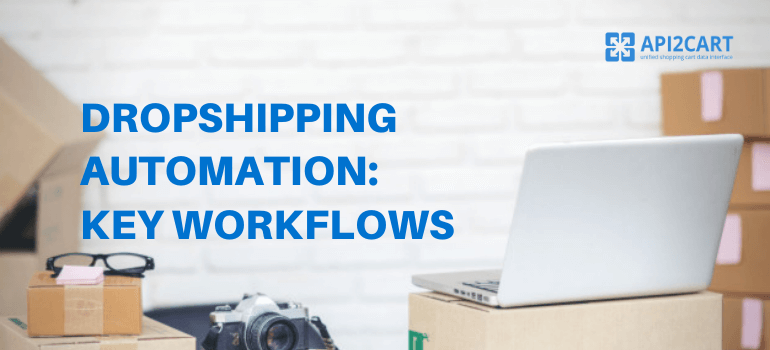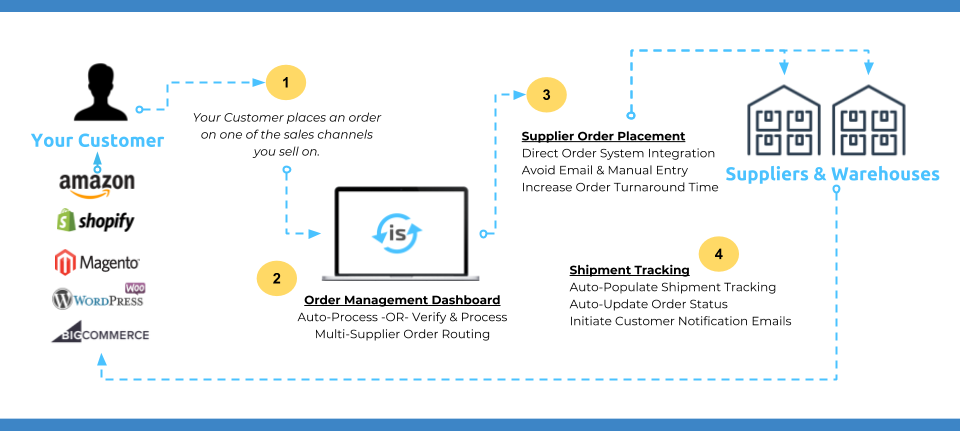
Dropshipping integrations automation is essential in today's ecommerce landscape. Automation seems to be a buzzword across many industries, fueled by robotics, artificial intelligence (AI), and increasingly “smarter” systems. Yet, dropship automation has been a cornerstone for building and managing dropship ecommerce businesses long before this trend became widespread.
What is Dropshipping Automation?
Dropshipping automation refers to automating the syncing of inventory and order data between dropship suppliers’ systems and ecommerce stores or platforms. This process helps eliminate manual errors and speeds up operations.
Without automation, retailers often find themselves updating inventory stock levels manually, copying and pasting order details, and tediously entering order status updates and tracking numbers. Such manual processes limit scalability and efficiency.
Dropship eCommerce businesses that handle dozens, hundreds, or even thousands of orders daily must implement effective automation workflows. Whether using custom scripts or dropship software, automation is the most cost-effective and scalable way to manage dropshipping operations.
Let’s explore the key types of dropshipping workflows that businesses aim to automate to optimize their performance.
4 Key Types of Dropshipping Workflows
1. Inventory Syncing
The most common ecommerce workflow is the updating of inventory stock levels. Maintaining accurate stock quantities on an online store is crucial for a seamless customer experience. In dropshipping, this is more complex than traditional retail, as retailers don’t hold physical stock.
Online store owners compete with other resellers for the same supplier products. Therefore, many dropship suppliers provide inventory feeds to update stock quantities dynamically, helping resellers keep their stores accurate as products go in and out of stock.
2. Product Data Uploads
Uploading new products is a less common but highly valuable workflow to automate. Unlike simple inventory quantity updates, adding new products involves uploading images, titles, descriptions, categories, and other details to the ecommerce platform. Each field may require specific formatting depending on the platform.

3. Order Routing
Alongside syncing inventory and product data, order routing ensures customer orders are properly fulfilled. When a customer places an order, retailers must transfer order details to the dropship supplier efficiently.
Typical order details sent include purchase order numbers, reseller account info, payment terms, customer shipping addresses, and item specifics like SKU numbers and quantities.
Manual entry of orders into supplier systems is time-consuming. Instead, retailers can use dropship automation software to send order details automatically via FTP, EDI, email, or API.
4. Shipment Status and Tracking Updates
Leading dropshipping websites automate the entire process, including syncing shipment statuses and tracking updates to keep customers informed.
Once an order is sent to a supplier, sellers expect to receive updates such as:
- Acknowledgement of order acceptance and processing
- Shipping status updates
- Tracking number and shipping carrier/method details
Suppliers usually provide this data via files over FTP/EDI/email or through APIs. With dropship automation software, sellers can automatically pull shipment status and tracking info into their stores, ensuring timely customer notifications.

Conclusion
Operating a dropshipping business without automation is possible but challenging, especially for large catalogs or high order volumes. Manual updates require significant manpower and often lack cost efficiency and scalability.
If you develop dropshipping software for retailers, integration with shopping platforms is critical. You can use API2Cart to connect your solution with Magento, Shopify, OpenCart, Amazon, eBay, and over 60 other eCommerce platforms seamlessly.

Shopping Platform Integration for Dropshipping Automation Software
Explore how to develop the integration with multiple shopping cart solutions easily.
With API2Cart methods for managing data from your clients' online stores, you can:
- Synchronize product info, prices, customers, and categories;
- Import orders from various platforms;
- Create shipments and update order statuses automatically.
Try API2Cart free for 14 days. To learn more about integrating your dropshipping software with multiple platforms, schedule a free call with our manager today!
About the Author:
Travis Mariea is the Managing Director at InventorySource.com, the dropship automation software.



